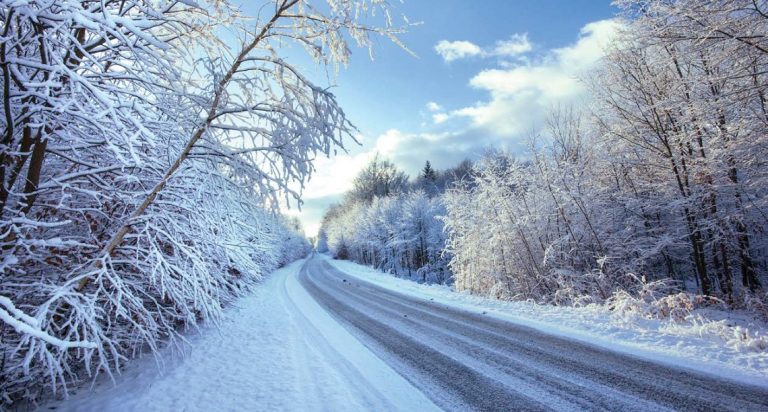With winter in full swing, it doesn’t mean you have to ditch the bike, riding in the snow can be an enjoyable experience if done right and the roads are usually less busy. To help you on your way, veteran enduro champion, Dave Thrope, shares his snow riding secrets…
First things first: keeping warm is essential, so be sure you have plenty of layers on. Once you’re wrapped up warm, the next thing you need to do is seriously plan your route. While riding in snow and ice can be tricky it’s important that you have a reasonable idea of the road ahead. Forget how you might have ridden in the summer, you’ll need to allow extra thinking time for braking and any change of direction.
Even if you have ABS, think about how much pressure you are putting through the front brake lever, straight-line braking is a necessity so try to avoid apex braking at all costs. Throttle and clutch control is, as always, the difference between an experienced and novice rider! Avoid aggressive throttle acceleration and always try to be smooth. It’s best to use the torque of your engine and keep the revs low to prevent the back wheel from spinning.
Clutch slipping is not recommended in extreme conditions as this will cause high revs which in turn may lead to rear wheel spin. Your riding position should remain the same although it’s essential you stay relaxed.
If you are riding out along tracks made from car wheels, I would recommend you stay in the left-hand track. Should you need to make a right turn across the middle (covered in snow or ice) be sure you show your intent to other road users well in advance and try to reduce your speed when making this change of direction. Remember, even when the busy roads appear to be clear it’s important that you remember that temperatures can still be very low so black ice may still be around.
If you decide to ride off-road in the snow and ice, again planning the route is essential. Be absolutely sure vehicle access is allowed on the route you have planned and always try to go with someone else, there tends to be less people around on these routes in bad weather and if things go wrong you’ll want someone who can call for help. Mobile phones should always be in a waterproof bag to ensure they’re usable.
The biggest problem for us all is that the small soft ruts we had in the summer have now developed into hard, kerb-like ruts! These should be entered at the angle in which they have formed, (i.e. do not try to enter one at a right angle) even for the most experienced off-roaders this is difficult.
If and when you come to any water hazards stop and take the time to gauge how deep they are (generally a small stick can help to check the depth) this can often reduce the chance of a long ride home soaking wet. It’s worth remembering that 4×4 vehicles may have been using the trail so the chances are there is a frozen ridge in the centre!
When leaving the trails to go back on the highway, check your number plate is free from any dirt. Always remember for the first few miles your tyres may still have a little soil on them as well.

